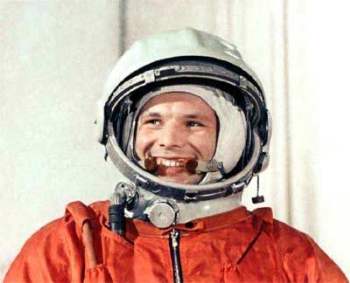Associated Genealogies of the Soviet Space Program (I)
Dmitri Prieto

April 12 marks human kind’s first 50 years in space. This fact reminded me of a not very well known collection of details that I wanted to share.
During the last third of the 19th century in Moscow lived Nikolai F. Fiodorov (1829-1903), a strange thinker who considered it sinful to be the proprietor of ideas or to even publish books under one’s personal responsibility.
Posthumously, his followers published a collection of his texts under the title Philosophy of the Common Task. An excerpt reads:
“While the object of science is to solve the problem of causes in general, it remains anchored in this question: Why does all of this already exist? But that is an unnatural, completely artificial question, whereas I believe it would be more sensible to ask: Why do those who live die?
“Due to the absence of fraternity, this question is not posed, nor is it even perceived as a worthwhile investigative requirement. However this is the sole object of investigation that could provide sense to existence for philosophers and academics who would cease being a caste and would return to the provisional commission with a specific purpose.”
Fiodorov intended to push science beyond its disciplines to the common task of the resurrection of our ancestors. He had many pupils in Russia; in fact Dostoevsky was one of his admirers.
One follower (Tsiolkovski, a certain provincial teacher who was famous for his deafness), as a member of the “commission” was concerned about a particular problem: where to house so many resuscitated ancestors? – perhaps on some of the planets available in our solar system?
With the intent of resolving that aspect of the “common task”, he proposed systems of space ships with several phases or stages that would use liquid fuel. He also developed mathematical models for their design.
A pupil of Tsiolkovski whose last name was Koroliov was the principal engineer of the Vostok system, which 50 years ago placed in orbit a young man whose last name was Gagarin (coincidently the same name as Fiodorov’s biological father).
While the American space capsules were in the shape of a truncated cone, the Vostok capsule was spherical (just like Sputnik I, its first prototype). Moreover, the Russian capsules looked similar to a mandorla, which has an aureole of light surrounding the Savior Jesus Christ in Russian icons of the transfiguration, as well as Russian Grand Duchess Anastasias.
Still used today, the Soyuz rocket-carrier (in fact it was the only one that covered the international space station missions when the shuttles stopped flying) was also designed by Koroliov. It has a shape similar to a Russian steeple, and on its tip — similarly highlighted — it bears a cruciform-shaped structure.
This is a small block of motors that are designed to start up should the crew find itself in imminent danger; these detach from the capsule of the rocket so that it can land. Thanks to this “emergency rescue system,” Russia — unlike the USA — has never lost cosmonauts during the period between ignition and going into orbit (*).
—
(*) Obviously, the Mercury, Gemini, Apollo and shuttle programs had their emergency rescue systems, but unfortunately three astronauts died (on earth) in the Apollo program and seven on board the Challenger minutes after its launching. The Soviets were close to losing at least one crew but the rescue rockets detached from the carrier capsule and they landed safely.





